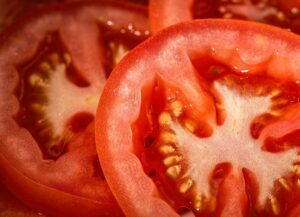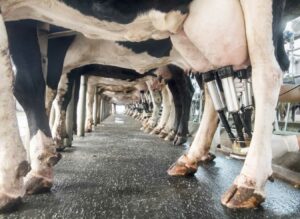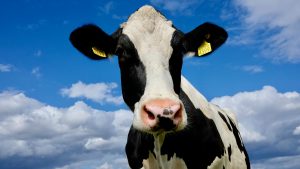María Villagrasa & Nuria García
Milk fatty acids (FA) are important nutritional components of the human diet and have been shown to have a significant impact on human health. With regards to dairy production, the FA profile is also considered an important factor in milk quality. From this perspective, making changes to the FA profile has the potential to provide added value to dairy products.
Olive pomace consists of pulp, skin and olive pits obtained after olive oil extraction. Pomace is highly variable depending on factors such as their residual oil and water content, pit ratio or oil extraction process.
Olive pomace is low in protein (7-8% DM basis), and high in fiber (55% neutral detergent fiber or NDF, and 45% acid detergent fiber or ADF). In addition, the concentration of lignin is very high (17% DM basis), and its fat is rich in oleic and polyunsaturated FA.
The inclusion of olive pomace in ruminant feeding is quite limited due to its low nutritional value, seasonal availability and deterioration when stored fresh for an extended period. Despite these disadvantages and given its high percentage of oil and high concentration of oleic acid it is believed that it could improve the fat profile in milk.
From this perspective, a study was conducted (Neofytou et al., 2020) to assess the effects of the inclusion of olive pomace silage on milk production and composition and the FA profile of milk of dairy cows.
A total of 24 Holstein-Friesian cows in their fourth lactation were divided into two groups and randomly assigned to two diets:
- Control: conventional diet(alfalfa hay and barley straw)
- Olive pomace silage: conventional diet in which part 10% of the forage in a DM basis was replaced by olive pomace silage
The diets were isoenergetic and isonitrogenous, and the concentrate/forage ratio was 64:36 in both treatments. The nutritional composition of the diets is in table 1. Table 2 shows the nutritional and FA composition of olive pomace silage.
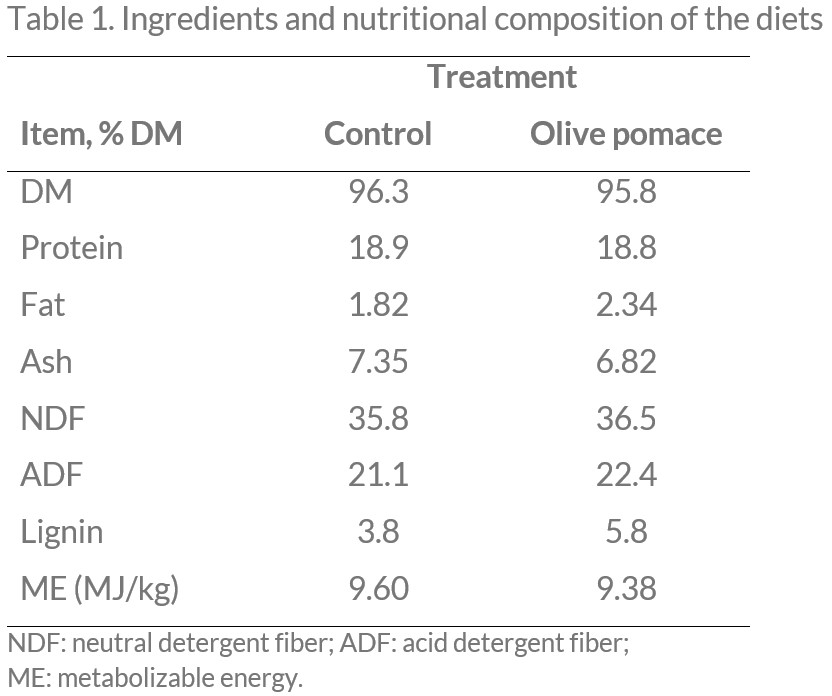
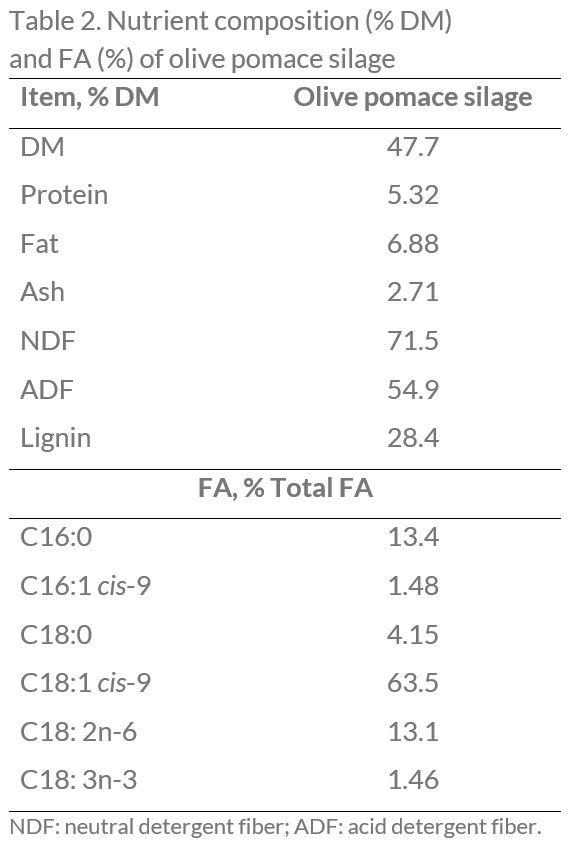
The inclusion of olive pomace in diets changed the concentration of most FA. Oleic acid (C18:1 cis-9) was more abundant in the diet supplemented with olive pomace (33.3 vs. 21.1%), the same as stearic acid (C18:0). However, palmitic (C16:0) and linoleic acids (C18:2n-6) were more abundant in the control diet (palmitic: 26.8 vs. 23.5% and linoleic: 23.5 vs. 21.3%).
The olive pomace diet increased fat production
Supplementation with olive pomace did not influence the production of milk and milk protein. However, fat production was higher in pomace-fed cows than the control group (0.85 vs. 0.80 kg/day), and the fat content was also higher (3.40 vs. 3.29%). No differences in DM intake were observed between diets.
The addition of olive pomace reduced the concentration of saturated FA
In general, the inclusion of olive pomace in the diet caused it to significantly increase the FA content of 18 C at the expense of a decrease in the concentration of FA less than 16 C.
As can be seen in the table, the concentration of monounsaturated 18-C FA, such as oleic acid (C18:1 cis-9), the conjugated linoleic acid (CIS-9 and trans-11LAC) and the sum of C18:1 trans-10 and trans-11, were significantly higher in the milk of cows that were fed olive pomace compared to the milk in the control group. With respect to other monounsaturated FA, the content in C14:1 cis-9 and C16:1 cis-9 was reduced in the milk of cows fed the pomace diet.
These results indicate that the change in the FA composition of milk due to the inclusion of olive pomace silage could have positive health effects for humans by increasing oleic acid and conjugated linoleic acid, which are known to suppress the formation of different carcinogenic tumors. On the other hand, the concentration of saturated FA, which are considered a risk factor for some cancers, was reduced.
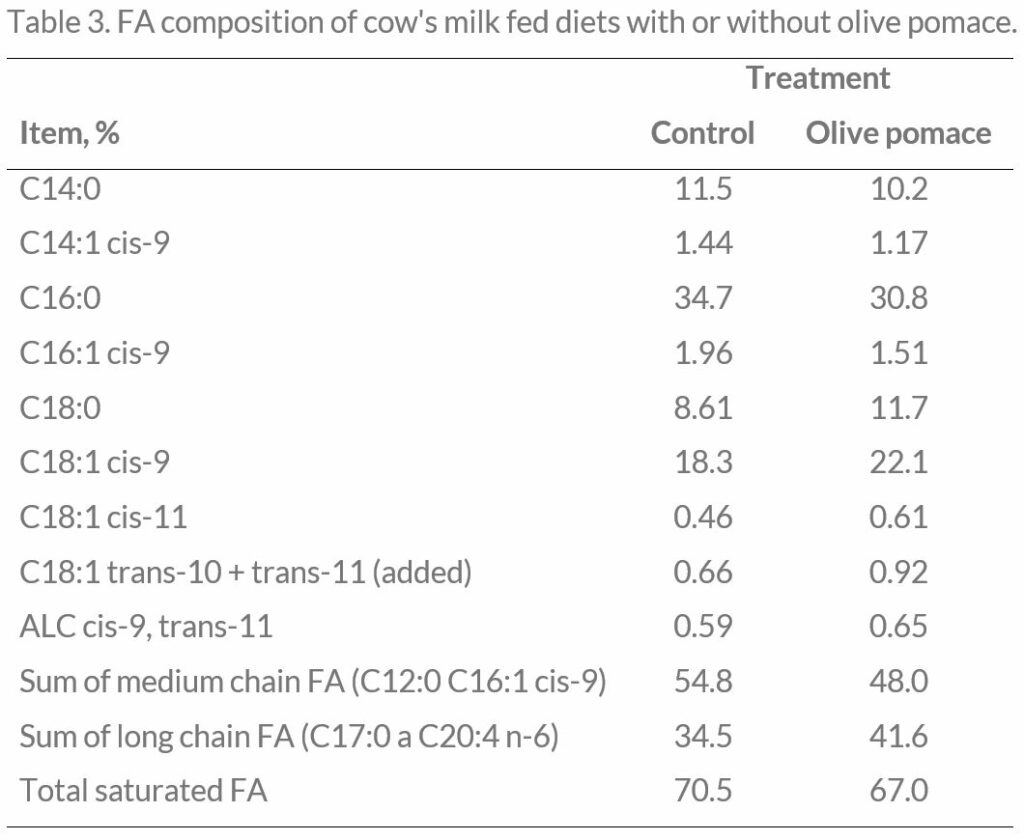
Conclusion
These results indicate that olive pomace supplementation increases the milk fat content and improves the FA profile of milk, with beneficial consequences for human health without harming milk production.
Reference
M. C. Neofytou, D. Miltiadou, E. Sfakianaki, C. Constantinou, S. Symeou, D. Sparaggis, A. L. Hager-Theodorides and O. Tzamaloukas (2020) The use of ensiled olive cake in the diets of Friesian cows increases beneficial fatty acids in milk and Halloumi cheese and alters the expression of SREBF1 in adipose tissue. J. Dairy Sci. 103:8998–9011.
© 2020 Dairy Knowledge Center. All Rights Reserved.


